FEATURE Mangrove Action Day Photography Voting Underway
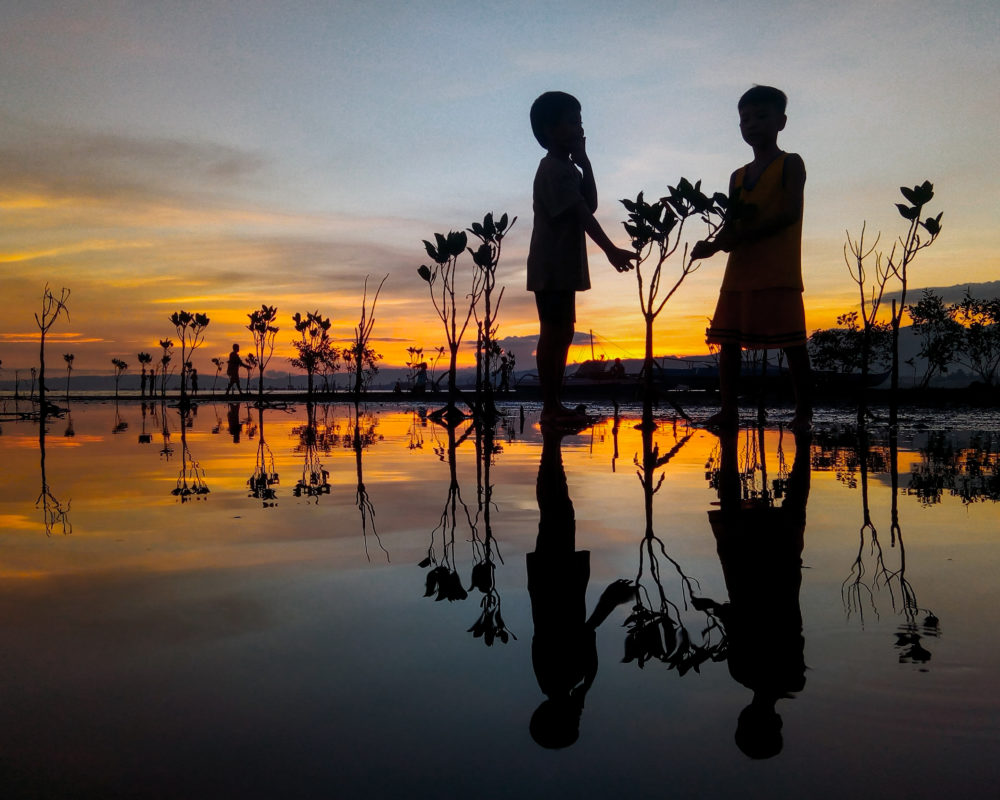 Mark Kevin C. Badayos // Philippines GLOBAL – MAP's recent call for photographs for World Mangrove Day 2019 is raising awareness of the important connections people have with mangrove forests.Throughout the month of July, we asked for and received 250 stunning photos from 30 countries around the world that highlighted mangrove ecosystems and their important contributions to communities and the environment. The theme for this year was #MangrovesMatter. July 26th marked the 20th anniversary of World Mangrove Day, now recognized by UNESCO as the International Day for the Conservation of the Mangrove Ecosystems. This historic day commemorated Greenpeace activist Hayhow Daniel Nanoto, who died during a massive protest to re-establish the mangrove wetlands in Ecuador. For the last 26 years, the Mangrove Action Project has celebrated this day with a commitment to action in defense of the mangroves and the communities that rely on them. We would like to thank each and every person who contributed to this project! Winners will be announced in late August and there is also a People’s Choice Award that is given out to the photo with the most votes. Enjoy the photos and vote for your favourite! VIEW PHOTOS GLOBAL International Day for the Conservation of the Mangrove Ecosystem 2019: Theme and Significance of the Day
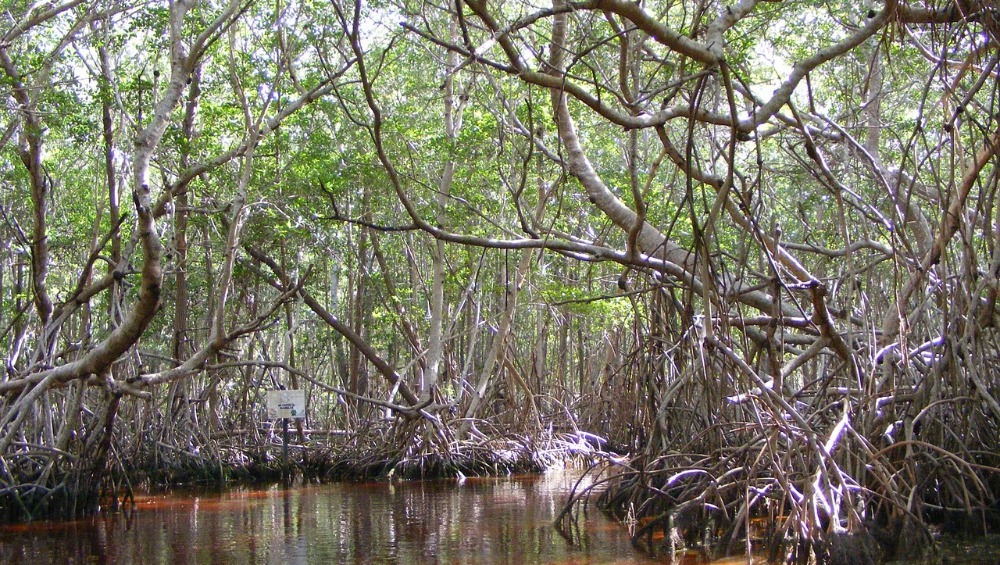
GLOBAL – The General Conference of the UNESCO, at its 38th session, passed a resolution to adopt July 28, as the International Day for the Conservation of the Mangrove Ecosystem. The UNESCO's proclamation states that, "Considering that mangroves are a unique, special and vulnerable ecosystem, providing by virtue of their existence, biomass and productivity substantial benefits to human beings, providing forestry, fishery goods and services as well as contributing to the protection of the coastline and being particularly relevant in terms of mitigation of the effects of climate change and food security for local communities." International Day for the Conservation of the Mangrove Ecosystem 2019: Why Protecting Mangroves Is Important for our Environment. Mangrove forests only grow at tropical and subtropical latitudes near the equator where temperatures are comparatively warmed. They cannot grow in freezing temperatures. Mangroves are important to thwart natural disasters like storms, tsunamis, erosions and any other similar intervention. Mangroves are depleting are a faster pace today due to rapid industrialisation, pollution and demand for housing. It is important for citizens and local governments to take initiative to be aware of the issue and save the further destruction of the mangrove ecosystem. READ MORE AFRICA How is new 'solar salt' technology saving Guinean mangroves?

GUINEA – In Dubréka, Guinea, salt production used to involve cutting down mangroves to burn as fuelwood. Now, a new project is using solar technology to extract salt in a safer, more sustainable way that is already allowing mangroves to regrow. The 38,000 hectares of mangroves in Guinea’s Dubréka prefecture are seriously threatened by salt extraction and sand mining, which are the main sources of income for nearby communities. The mangroves are being cleared to make way for mines or cut down as fuelwood for the salt extraction process. Now, a new project is working to protect the wetlands by educating salt producers, most of whom are women, on how to extract salt from the mangroves sustainably. New technology enables the production of salt using sunlight and tarpaulins instead of fuelwood. With financial support from the Critical Ecosystem Partnership Fund and local nonprofit organization Developpement Pour Tous (DPT), working in partnership with Fondation Agir Pour l’Afrique (FAPA), this technique not only protects the mangroves but eliminates the safety risks that come with harvesting fuelwood. READ MORE Mangrove conservation more valuable than ever thanks to carbon trading

KENYA – When a proven ecosystem restoration method also helps reduce poverty and build economic resilience, governments will often back them as a win-win solution. The UN Environment Programme, the Kenya Forest Service, the Kenya Marine and Fisheries Research Institute and partners recently launched the Vanga Blue Forests Project on the Kenyan coast, a groundbreaking initiative to trade carbon credits from mangrove conservation and restoration. “The whole of this village and other nearby villages depend on fishing. And the mangrove forest is the actual breeding area for the fish,” says Vanga chief Kama Abdallah. “If the mangroves are destroyed there would be hunger,” adds Vanga resident Mwasiti Salim. “The project will conserve and restore over 4,000 hectares of mangroves in Kwale County and support the livelihoods of over 8,000 people in fishing communities in the area through community development initiatives,” he adds. READ MORE AMERICAS Rising sea levels are destroying coastal towns in Honduras – and shrimp farms which export to the UK and US are making it worse

HONDURAS – Golden beaches once helped transform this fishing community on the Gulf of Fonseca into a thriving tourist destination. Nowadays, however, there are barely a few metres of sand left, and rising water levels and tidal surges have wiped out roads, homes and businesses. Locals estimate that around a metre of ground is lost every year – which means this entire community will soon be under water. The same predicament is faced by settlements along the Pacific coast of Honduras, where land and its people are disappearing fast. Sea levels are rising around the world, but in this region another local factor is helping speed up coastal degradation: swathes of mangrove forests have been destroyed to make way for industrial shrimp farms which have proliferated even inside protected reserves. Many Honduran shrimps are exported to the US and the UK, where they are sold in major supermarket chains including Waitrose, Sainsbury’s and Marks & Spencer. “The industry destroys huge mangrove sites promising development, but actually creates very few jobs – and actually increases poverty by restricting fishing access for locals,” said Dina Morel, director of a local marine conservation organization, known by its acronym Coddeffagolf. READ MORE ASIA The Fantastic Fishing Cat

SOUTHEAST ASIA – In the mangroves across South and SouthEast Asia lives a small, secretive felid. It emerges just as the sun goes down, and begins its nightly hunting expedition. This cat is so rare, many people living alongside it don’t even realise it is there. There are so few recorded sightings of this cat in the wild we don’t even know just how many there are. Best estimates put this mangrove cat as being even more endangered than the tiger. This is the story of the fishing cat and the people who are trying to save it. Unfortunately, these little cats are in big danger. Their biggest threat actually lies on your supermarket shelf, and you may be surprised to learn just what it is. Next time you go shopping I want you to go down the seafood aisle and take a look at a packet of prawns. Most of them will say “product of Thailand” or “India” or somewhere else in Asia. Now what they don’t tell you on the packet is how those prawns got there. So let me tell you. These prawns come from what’s called a ‘shrimp farm’ as you can see in the picture below. READ MORE Big aquaculture bulldozes Borneo

MALAYSIA – "Do you think we can find any food in this place now?" asked Bondien, a village leader of the Tombonuo people. "The company thinks it can do anything it wants — that we don't count." The company is Sunlight Inno Seafood. Owned by Cedric Wong King Ti, a Malaysian businessman known as "King Wong," it has bulldozed swaths of mangroves in the Tombonuo's homeland in northern Borneo to make space for plastic-lined ponds filled with millions of king prawns. The shrimp are destined to be fattened for three months, scooped up in nets, quick frozen, packed into 40-foot refrigerated containers and loaded onto cargo ships bound for distant ports. Gargantuan as it may seem to Bondien and his relatives, the project represents only a speck in the global aquaculture industry, one of the world's fastest-growing sources of protein. Unfolding across Asia and around the world, this revolution in farming could help mitigate the impacts of climate change — or make them even worse. READ MORE Sinking Jakarta needs giant sea wall

INDONESIA – Indonesia's president said in an interview that he wants to see the speedy construction of a giant sea wall around Jakarta to prevent the low-lying capital from sinking under the sea, lending renewed backing and a sense of urgency to a slow-moving and politically contested mega project. President Joko Widodo and his government are up against a tight timetable, including a forecast by experts that at the current rate, one-third of Jakarta could be submerged by 2050. The existential crisis facing the city is the culmination of decades of unfettered development, almost nonexistent urban planning and misrule by city politicians who have served private interests over those of the public. Lacking a comprehensive piped water network, industry and homeowners have tapped into the city's aquifers, causing rapid subsidence in northern Jakarta, home to several million people. In this area, the swampy ground has been sinking at an average of about 10 centimetres a year. Rising sea levels from a heated-up planet will compound the problem in decades to come. READ MORE How the Women of Indonesia Rose up Against Land Grabbing

INDONESIA – One night in 2013, in East Borneo, the family of Lusang Arang was surprised by an unexpected visitor at their home. The visitor’s arrival at midnight was not the only thing that surprised the family; what he brought was even more startling: a large bag full of cash. Lusang Arang’s wife quickly decided what to do. She sneaked out and called out the other women of the village, who immediately gathered around the house, bringing their sleeping children in their arms. It was the guest’s turn to be surprised; he obviously didn’t expect a large audience at that time of night. The women all stood in front of the house and remained silent, the embodiment of their non-violence vision. They simply stared at the visitor until he decided to abort his mission to bribe Lusang Arang, the community’s customary head. These women were part of the Long Isun community in Mahakam Hulu, which has resisted years of intimidation, violence, and pressure from the logging company Kemakmuran Berkah Timber (PT. KBT). In 2008, PT. KBT was granted a concession on the community’s ancestral lands without the community’s consent. This is not an isolated case, in a country where most indigenous communities hold land under customary tenure systems and lack formal titles, making them especially vulnerable to land grabbing. World Resources Institute (WRI) noted that the process for indigenous communities to secure formal land rights in Indonesia can be 15 years or more, while wealthy and politically connected companies can secure palm oil concessions within three to five years by taking advantage of legal loopholes. READ MORE West Papua regencies to host international mangrove day events
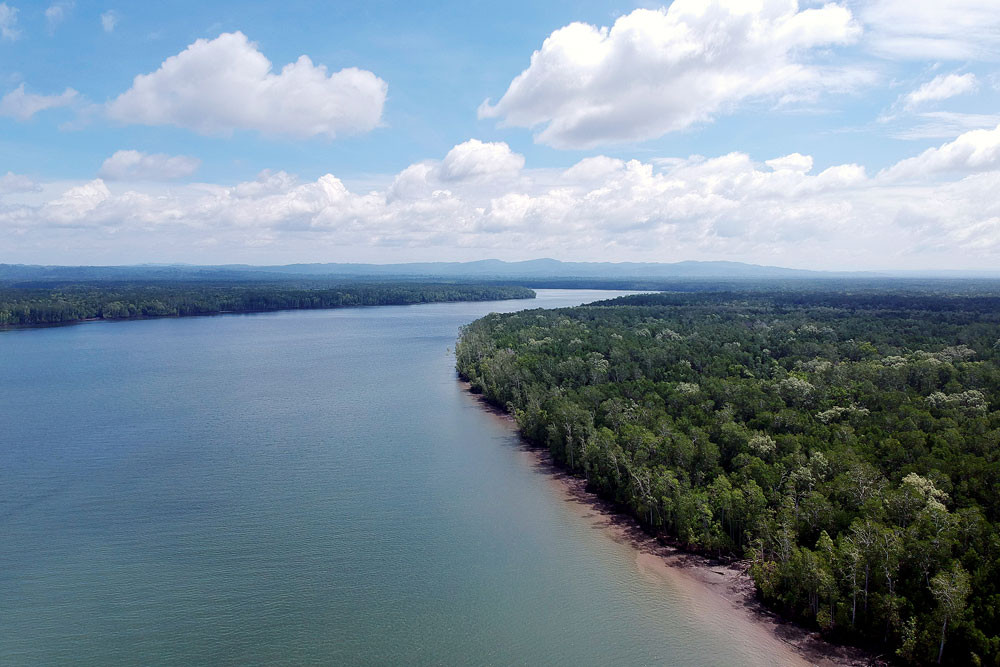
INDONESIA – Mimika and Asmat regencies in West Papua are set to host events for the International Day for the Conservation of the Mangrove Ecosystem on July 26 to educate the public on the importance of mangroves to the environment. “The major theme in this year’s celebration is ‘Mangrove for the Nation’ in which Blue Forests wants to highlight the importance of the mangrove ecosystem in all aspects of life, be it ecology, economy or social life,” said Wahyudin Opu, coordinator of Blue Forests Mangrove Co-Management, in Jayapura, West Papua, on Wednesday, Antara news agency reported. He said that in Mimika regency, the event would be held in Kokonao by monitoring the mangrove areas there and cleaning debris from the coast. “Mangrove day celebrations will also be filled with activities such as on-site education about mangroves and competitions for elementary school students in Kokonao,” he said. READ MORE She guards Mumbai’s defence against climate change

INDIA – Fifty-six-year-old Seema Adgaonkar glides through swampy mangroves in ankle-deep muck. The fragrance of Avicennia marina (the grey mangrove), the most widely-spread mangrove species in Mumbai, makes the trail pleasant despite the 36 degree Celsius hot and humid conditions. Adgaonkar relishes the scent as she walks in a single file with a forest guard and two helpers, towards one of the mangrove nurseries they set up on the city’s coastline. She gives the team instructions on where to plant saplings along the course and shares tips to identify some of the species with their regional and scientific names. “You’ve to know everything that is associated with your job to do it well,” said Adgaonkar, about her erstwhile role as a Range Forest Officer (RFO), which included mangrove plantation and guarding the ecosystem that borders Mumbai. In some parts of the city’s tangled mangroves, she and her team members carry ropes and hooks to pull themselves to safety. They have also learned from crab catchers the technique of using a wooden plank to wade through the dark muck in mangroves and mudflats. Adgaonkar can navigate boats, big and small, through the creeks and estuaries of the coastal city. Until recently, she was one of the four range forest officers at the Mumbai Mangrove Conservation Unit (MMCU), a 36-member body, solely dedicated to protecting the city’s mangrove forests. With a recent promotion, Adgaonkar is on to using her skills and experience to train the next generation of guardians of Maharashtra’s forests. READ MORE LAST WORD Denounce Government’s Inaction to Save the Sundarbans Dear all, As you maybe aware that Professor Anu Muhammad, one of NCBD's central leader and a key spokesperson of the save the Sundarbans movement in Bangladesh was threatened to be kidnapped after UNESCO's Baku conference last month. It's been nearly a month since he reported the incidence to police but no action was taken to identify the criminals – let alone prosecute. Given government's inaction, XRISN has issued a statement of support to Anu Muhammad and to save the Sundarbans campaign. The letter was also endorsed by PSG last week on World's Mangrove Day. For your reference the statement is HERE: Please feel free to share the statement with your network and reliable journalist network. As the statement indicates, we will deliberate our efforts to organise together with NCBD and other Bangladeshi environmental groups to seek justice for frontline activists in Bangladesh and to take the campaign to save the Sundarbans forward in the coming months. We would like to have your advice, ideas and support to mobilise against human rights violation of mangrove rights activists on the ground. Please contact me or Kofi if you have any suggestions. Thank you for your support.
Rumana – rowshonrumana@gmail.com
Kofi – mawusafo@yahoo.com
Like this newsletter?
Pease consider donating to MAP to keep it going.
Giving could never be easier | ACTION ALERTSMangrove Action Day Photography Voting Underway. CLICK HERE Call for case studies from indigenous peoples and local community organisationsThis is a general invitation for sharing and contributing to the online version of the second edition of the Local Biodiversity Outlooks (LBO-2). Submissions are welcome from all indigenous peoples and local communities (IPLCs) with examples, stories, case studies, information and data READ MORE Keep loggers out of Selous Game Reserve!
Tanzania’s government is moving ahead with its plans for a hydroelectric dam in Selous Game Reserve. A huge swath of the UNESCO World Heritage site and habitat of iconic African wildlife would suffer irreparable damage. 1,500 km2 – an area the size of London – has just been opened to logging. Please help us protect Selous. SIGN PETITION Don't trash coral reefs for the cruise industry! – TAKE ACTION Sea turtles or condominiums?
Sand mining and construction work would wipe out a marine biodiversity hotspot and destroy the livelihoods of local people, who have not been consulted. Please SIGN! Save Penang! Reject the 3-Islands Reclamation!
The lack of public consultation and detailed information about the project is shocking in view of the size of proposed reclamation which is 4,500 acres or 7 square miles
PLEASE SIGN
Save Pulau Kukup National Park – second largest mangrove island in the world. Sign The Petition Like this newsletter? Pease consider donating to MAP to keep it going. Giving could never be easier 
UPCOMING EVENTS 2019 Environmental Science and Climate Change Conference September 10-11, 2019
 REGISTER NOW REGISTER NOW 
Restoring The Natural Mangrove Forest
Watch movie 
Community Based Ecological Mangrove Restoration in Rufiji Delta VIEW VIDEO Video: Mangroves for the Future – A look bacK. As the latest phase of Mangroves for the Future (MFF) draws to a close, this video highlights some of the project’s most successful initiatives – from local women supporting national park management in Viet Nam to an island in the Maldives that has become a model for waste management, and everything in between. View Here Making the case for Emergency Climate Change Action
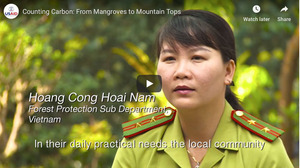
Counting Mangroves

Placencia mangrove workshop teacher's poem Volunteer with MAP – LEARN MORE Watch Children's Mangrove Art Calendar Promo 2019 Click Here  
MAP 2019 Children’s Calendar CLICK HERE You can help ensure that the knowledge and skills needed to conserve and restore mangroves is preserved in coastal communities READ MORE WANT TO GET INVOLVED?
Follow and Join MAP!    

Like this newsletter? Pease consider donating to MAP to keep it going. Giving could never be easier 

VOLUNTEER OPPORTUNITY 
MANGROVE ISSUES Want to learn more about mangroves?
Our short presentation will give you a better understanding of the issues we are working to solve. WATCH PRESENTATION What is CBEMR? Easy to follow fact sheet – CLICK HERE What is EPIC? – The Ecosystems Protecting Infrastructure and Communities (EPIC) project: the role of ecosystems as protective barriers against climate induced hazards MANGROVES APP AVAILABLE
A pictorial field guide for easy identification of various mangrove species and learning about the mangroves ecosystem. CLICK HERE View MAP’s uploaded Videos at MAPmangrover’sChannel
Question Your Shrimp Consumer/Markets Campaign!
WATCH VIDEO Mangrove Restoration in Asia – Watch Short Video The Value of Mangrove Forests View Video CBEMR Experience Exchange MAP 2017 English Subtitles
VIEW THE VIDEO Mangroves: Guidebook to Malaysia – Click Here
Mangrove rehabilitation in Asia – Local Action and cross-border Transfer of Knowledge for the Conservation of Climate, Forests and Biodiversity VIEW VIDEOS HERE SHARE MAP'S VISION
CLICK HERE to watch short introductory video. Together we can work "at the roots of the sea". Our short documentary, Reducing the Risk of Disaster through Nature-Based Solutions : Mangroves

Exclusive Interview with Alfredo Quarto, Co-Founder and Executive Director of Mangrove Action Project – See more
Marvellous Mangroves Curriculum The Marvellous Mangroves Education Forum is an online hub for those utilizing the Marvellous Mangroves (MM) Curriculum. It gives students, teachers and anyone interested in mangroves, the opportunity to learn and share ideas themed around the curriculum, to connect and communicate with others around the globe whilst exploring mangroves from your computer or on the go. VISIT 
The award-winning Marvellous Mangroves (MM) curriculum educates children on the importance of mangroves and their ecological functions, teaching them about modern challenges and mechanisms for sustainability. VIEW VIDEO Marvellous Mangroves Curriculum in Bangladesh – WATCH VIDEO
MARVELLOUS MANGROVES IN BRAZIL
En Portuges 
Marvellous Mangroves – A Curriculum-Based Teachers Guide. FOR MORE ON MAPs AWARD WINNING CHINA MANGROVE CURRICULUM VISIT

VIMEO SHOW
VISIT OUR "MM" WEBPAGE Check out our presentation for more details on Marvellous Mangroves Read this 10 page history of the development of MAP’s educational curriculum VIEW DOCUMENT
Article in Canada's Green Teacher Magazine – Read More
Like this newsletter? Pease consider donating to MAP to keep it going. Giving could never be easier 
Green Planet Fundraising Assists MAP – LEARN MORE
Volunteer Opportunities with Mangrove Action Project CLICK HERE
"Question Your Shrimp" Campaign Question Your Shrimp- Don't Buy or Sell Imported Tropical Shrimp! Sign the Petition Learn more about the affects of the shrimp industry on mangroves by visiting our blog
Editor’s Note: Mangrove Action Project’s Executive Director, Alfredo Quarto was interviewed about shrimp by Green Acre Radio’s Martha Baskin
LISTEN TO INTERVIEW Information sheds clear light on shrimp-mangrove connection
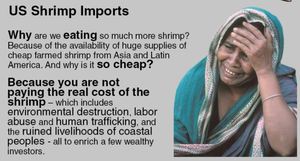
SEE DETAILS MANGROVE/SHRIMP Sign the Consumer's Pledge to avoid imported shrimp
Not yet a MAP News subscriber?
Click here to subscribe. Note to Our Readers: We strive to keep active links in our newsletter. However, due to circumstances beyond our control, occasionally links to stories may become broken. If you find a link to a story is not functioning, please cut and paste the headline into your browser search bar. In most cases you should be able to locate the original story.
|






























